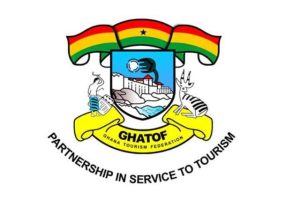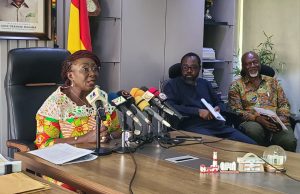In a landmark event, the Ghana Heritage Conservation Trust (GHCT) has unveiled a comprehensive five-year strategic plan (2024-2028) to guide its operations over the next half-decade.
This strategic plan, the second since GHCT’s establishment in 1996, reinforces the Trust’s leadership in the conservation and preservation of Ghana’s heritage, natural, and cultural resources. The GHCT has played a pivotal role in safeguarding significant sites such as forts and castles, driving community improvements, and managing the Kakum National Park, working in collaboration with public institutions like the Ghana Museums and Monuments Board and the Forestry Commission.
Developed with technical support from USAID Ghana, the plan outlines a detailed guideline for the sustainable management of these resources. It is designed to benefit the communities where these resources are located and to ensure their preservation and accessibility for the wider public.

The launch event, held on August 22, 2024 at the La Palm Royal Beach Hotel, drew a broad range of stakeholders, including representatives from the tourism, arts, and culture sectors, academia, traditional rulers, diplomatic missions and the media.
In her speech, Theresa Ayoade, a member of the GHCT Trustees, called for collective action to realise the strategic plan’s objectives.
“As we move forward, let us remember that this strategic plan is not merely a guide for our leadership; it is a call to action for all of us. Together, we will strive to foster innovation, enhance collaboration, and drive sustainable growth, ensuring that we remain responsive to the needs of our community and stakeholders. The success of our strategic initiatives will depend on our ability to work together, leveraging our diverse strengths to achieve common goals,” she emphasised.

The Minister of Tourism, Arts and Culture, Andrew Egyapa Mercer, reiterated the government’s commitment to conserving Ghana’s heritage and natural resources. He revealed that $12.6 million has been allocated for conservation efforts in 2024.
“Furthermore, the government, through Cabinet, has approved $126 million over the next five years for the conservation of our forts and castles. This unprecedented commitment is a testament to our understanding of the importance of these monuments, not just to our nation but to the entire world,” the Minister said in a speech delivered on his behalf by the CEO of the Ghana Tourism Authority, Akwasi Agyeman.
Egyapa Mercer also called for industry-wide collaboration to drive the strategic plan’s goals.

“As we launch the strategic plan of the GHCT, I urge all stakeholders—government, private sector, civil society, and indeed the greater tourism industry—to come together in solidarity to ensure the successful implementation of this plan. Our heritage defines us, and its preservation should be a collective responsibility.”
The GHCT’s strategic plan is anchored on seven thematic areas: Conservation and Restoration; Education and Outreach; Sustainable Tourism; Research, Documentation, and Publication; Business Development; Sustainable Financial Management; and Governance, Management, and Administration.

Chairman of the Board of Trustees, Professor Edward Marfo-Yiadom, provided a comprehensive presentation of the plan, affirming the GHCT’s commitment to protecting Ghana’s natural and heritage resources.
“The plan outlines our priorities and goals for the preservation and promotion of Ghana’s natural, cultural, and historic heritage,” said Professor Marfo-Yiadom. Our strategic plan is based on a comprehensive analysis of the challenges and opportunities facing Ghana’s heritage sector, as well as the strengths and weaknesses of our organisation. It reflects our commitment to working in partnership with government agencies, civil society organisations, communities, and other stakeholders to achieve our objectives, the Board Chairman, added.







